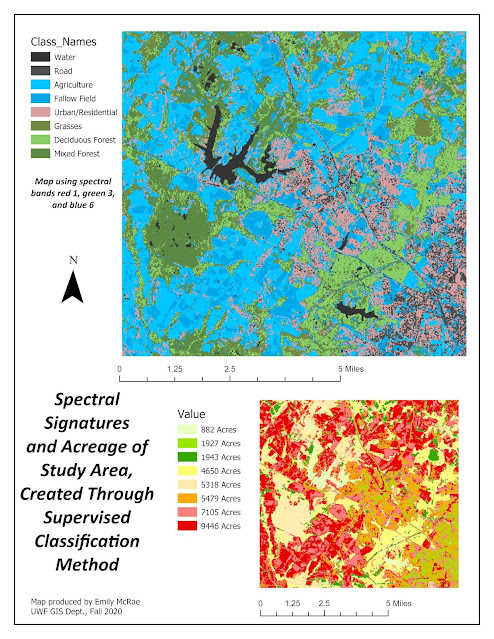GIS 5935 Module 2
In this module, formally established methods of determining accuracy standards are reviewed, notably the National Standard for Spatial Data Accuracy (NSSDA). This is a national standard for determining the confidence of point positional accuracy. This method uses a sample of real and test points selected at random to generalize the accuracy of the entire data set. As an example of this practice, I tested the accuracy of two road maps of Albuquerque streets, one provided by the city of Albuquerque, and one a USA street map. Those these data layers are lines and not points, points are placed at intersections and used to test the accuracy of the road segments. Other methods for determining positional accuracy of line segments, such as the epsilon band method, are not formally standardized (Bolstad, 2016, Chpt 14). Using NSSDA guidelines and procedures, confidence of both data sets is determined and reported to the nearest foot.
Methods:
1) Divide study area: Study are is divided into four quadrants using the measuring tool in ArcGIS Pro.
2) Select and establish locations of true reference points: I selected 20 points randomly and by hand, 5 within each quadrant and ensuring they are all cross at 10 percent diagonally across the quadrant, using the distance between points divided by 10. This is achieved using the measuring tool in ArcGIS Pro. These points are recorded in a new feature class and represent the true locations of points. They are marked at the center of street intersections, as seen in aerial images, following best protocol for selection including the intersection being present in the both street data sets, the intersection is not a complicated intersection, and the intersection is at a right angle.
3) Mark test points: In two new feature classes, one for each street layer, the intersections as they are represented by the street line data sets are marked using points. All points are assigned a unique point ID.
4) Perform calculations: The NSSDA provides a table with formula guidelines to calculate the distance from the true and test points, and to determine the distance range at which 95% of points statistically should fall within of the true point location. The 3 tables are exported from ArcGIS Pro, that is the true points and each of the 2 test points, and opened in Excel. The values for each column in the table are assigned and calculations performed. These include the locations of each point, true and test, the difference between them, the squared difference between them, and the sum of the squared difference between them, performed for each of the 20 points. Then, a sum of those squared differences, an average of the squared differences, the root mean square error, and the NSSDA standard, which is the root mean square error multiplied by 1.7308. This last calculation yields to distance, in this case in feet, that 95% of the test points are likely to fall within from the true location.
5) Report accuracy statement: The NSSDA provides 2 statement guidelines to quickly report the accuracy of the data. This structure is followed for both test data point sets. The USA streets were found to be much less accurate (NSSDA = 435.1972 ft) than the Albuquerque city streets (NSSDA = 16.6198 ft). Accuracy statements are reported below.
USA Streets: Compiled to meet 435.1972 feet horizontal accuracy at
95% confidence level.
ABQ Streets: Compiled to meet 16.6198 feet horizontal accuracy at 95% confidence level.
 |
| The above map shows the study area (red outline) with with 20 true points. |
Sources:
Bolstad, P. (2016). GIS Fundamentals: A First Text on Geographic Information Systems, Fifth Edition (5th edition). XanEdu Publishing Inc.
Minnesota Planning Land Management Information Center. (1999, October). Positional Accuracy Handbook Using the National Standard for Spatial Data Accuracy to measure and report geographic data quality. Minnesota IT Services Geospatial Information Office. https://www.mngeo.state.mn.us/committee/standards/positional_accuracy/positional_accuracy_handbook_nssda.pdf



Comments
Post a Comment